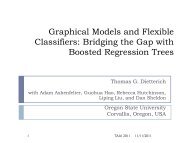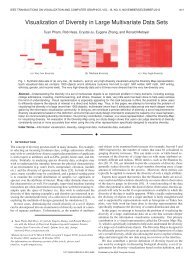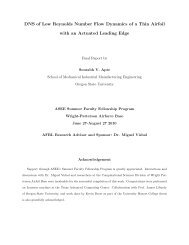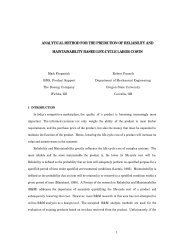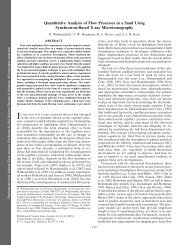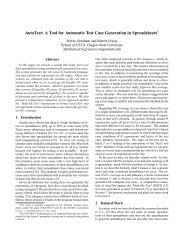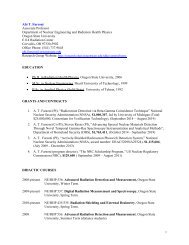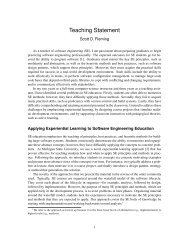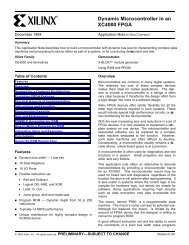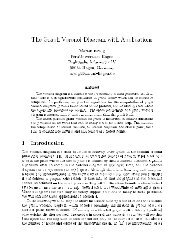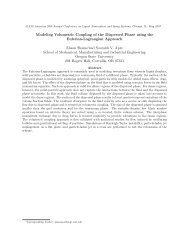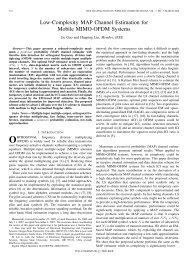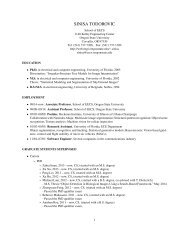Large-eddy Simulation of Realistic Gas Turbine Combustors
Large-eddy Simulation of Realistic Gas Turbine Combustors
Large-eddy Simulation of Realistic Gas Turbine Combustors
Create successful ePaper yourself
Turn your PDF publications into a flip-book with our unique Google optimized e-Paper software.
y cold air influx through the dilution holes. This reduces the exit temperature considerably.<br />
The prediction <strong>of</strong> mass-splits through different components was shown to be within 5% <strong>of</strong> the<br />
experimental data for the cold and reacting flow simulations [1, 11] and are not repeated here.<br />
In addition, the average temperature in the measurement plane is within 2% <strong>of</strong> the experimental<br />
data. The comparison <strong>of</strong> the radial variation <strong>of</strong> the mean temperature is shown in Fig. (11) and<br />
was obtained by taking azimuthal average over the sector. This represents our first attempt to<br />
perform such large-scale simulations in realistic configurations and the results give considerable<br />
insight into the combustor spray-flame dynamics.<br />
This computation has been performed on 80 processors <strong>of</strong> ASC Frost (IBM SP3) and involved<br />
around 0.6M computational particles. It takes around 25-30 CPU-days on ASC Frost to obtain<br />
statistics over 40 time units (3-4 flow through times) starting from a statistically stationary<br />
solution. Significant advances in numerical algorithms resulting in efficient speedup <strong>of</strong> the solver<br />
are underway [26]. These new algorithms are expected to make possible such a multiphysics,<br />
multiphase computation <strong>of</strong> the full 18 injector combustor on 100M control volumes within 120-<br />
150 CPU-hrs on the full ASC Frost machine (1024 processors). In addition, advanced models for<br />
prediction <strong>of</strong> pollutants and NOx are being developed and applied to compute their distributions<br />
within the combustion chamber. A variety <strong>of</strong> flow conditions including cruise, high power, take<strong>of</strong>f<br />
etc. are also being simulated for multiple sectors <strong>of</strong> the combustor.<br />
6 Summary & Future Work<br />
A non-dissipative, energy-conserving numerical solver for arbitrary-shaped unstructured grids<br />
is developed to simulate multiphase, multiscale turbulent reacting flows in realistic gas-turbine<br />
combustors. This numerical tool solves low-Mach number, variable density flow equations for<br />
the gas-phase. Advanced models to capture atomization & droplet breakup, droplet evaporation,<br />
droplet deformation & drag, and turbulent combustion have been developed to simulate<br />
complex multiphase reacting flows. In this paper, we emphasize the necessity <strong>of</strong> performing<br />
detailed validation and verification studies to assess the predictive capability <strong>of</strong> the numerical<br />
22



